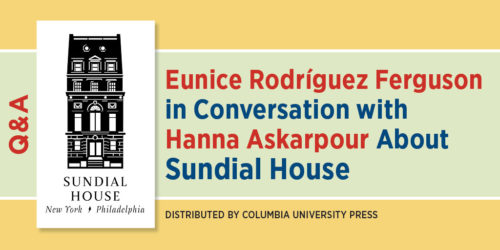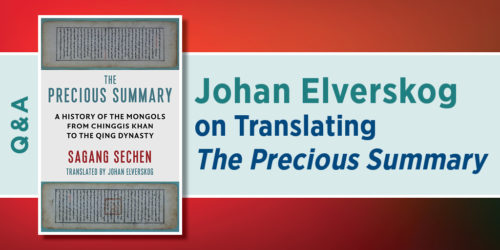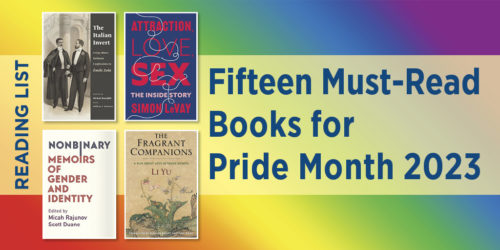Alejandro Álvarez Nieves on Translating Negras

A rendering born out of love. This project was a happy accident. Yolanda had just been selected for the prestigious Bogotá 39 list of Latin American authors with her first book, Ojo de Luna. While collaborating as curator for Mayra Santos-Febres’s Festival de la Palabra in Puerto Rico, I received a copy of las Negras. I saw the kinship with English-speaking Black writers immediately—Morrison, Danticat, Lorde, Angelou, Shange, just to name a few. It became clear to me that this work had to be available in English. I asked permission to translate the book and Yolanda generously accepted.
Two key challenges in rendering Yolanda’s work into English, are the title—las Negras—and the use of verb tenses. The title’s definite article la introduces a category for generic use which English just does not tend to use. The female morpheme –a, combined with the article would be something like “The Black Women,” or even “Those Black Women”; hence, my first option answered to an explanatory approach. There is not much literature about Black women from or coming to Puerto Rico, or about their ancestors, in Spanish, even less in English. Also, the word black had yet to be widely used in uppercase to refer to the origin and culture of a people. This book is about rewriting Blackness and retelling the history of Black women who were taken by force from their ancestral homes. Since the first story is about a Black warrior captured with the intent of taking her to the Caribbean, yet she does not live the Puerto Rican experience, we resolved to leave the title in Spanish—Negras. I believe keeping the name in Spanish without the lowercase article precisely starts the desired dialogue in the generic use intended by Arroyo Pizarro. That female –a is the beginning of conversation with all Black English-speaking women who descend from the same tradition. It is a linguistic invitation to sisterhood.
As other Caribbean writers, Yolanda Arroyo Pizarro works on revealing just enough by using verb tenses and complex syntax. The use of the present tense in contrast with the past creates a desired effect that is not easy to pull off in Spanish. Fortunately, with the rise of memoirs and chronicles, and critical fabulations, Arroyo-Pizarro’s style has endured the test of time. In English, fellow Caribbean writers like Marlon James and Edwidge Danticat also alternate verb tenses with mastery. Therefore, I did my best to maintain verb tenses in favor of an effect whenever possible. Arroyo Pizarro is a very visual writer. She tends to focus on a detail like looking into a microscope, only to widen the lens like a telescope. One of her mechanisms is to alter the syntax, a feat more possible in Spanish as verbs have flexibility in referring to grammatical person. I maintained the order whenever I could so readers can appreciate the way she constructs her stories.
I maintained the order whenever I could so readers can appreciate the way she constructs her stories.
Yolanda’s poems, selected here from Yo, Makandal (I, Makandal) are infused with Puerto Rican references. One of the main decisions was to maintain the Yoruba names of deities as they are written correctly in English. Yoruba as a spoken language is mainly circumscribed to some communities in Cuba; therefore, there is no correct way to spell out names. One just writes the word as you hear it, which is the spelling rule in Spanish. This means that there are no standardized ways to write the names of the òrìṣàs, which are commonly written as orishas. I decided to keep the Nigerian Yoruba spelling because this is the way in which the practitioners of Osha, more commonly known as Santería or the Lucumí religion, write the names of the òrìṣà. Once can see Ọ̀ṣun, the deity of fertility and communication, represented by the river, spelled in Spanish as Ochún or Ochun or Oshún or Oshún. Using the correct Nigerian spelling, as some priests and priestesses of Santería in Puerto Rico do, provides a uniform way of spelling. In addition, it evokes the original aspect of the religion, which today is practiced slightly differently in Nigeria and Black Latin America. Be that as it may, I wanted her work to evoke ancestry, which is the purpose of the selected poems.
The case of la babalao followed the same reasoning. Babalawos are the highest-ranking priests in Santería. Following a syncretism with Catholicism, mainly to avoid the Inquisition, women are not allowed to become babalawos, as the word itself is reserved for males—babá (father) lawo (of paths). In some parts of Nigeria today, however, although not recognized by the Lucumí tradition (the dominant denomination in the Americas) women are allowed to become iyalawos—yá (mother) lawo (of paths). I preferred to use the female name in Yoruba because the article in English cannot express gender as la in Spanish does.
The case of la babalao followed the same reasoning. Babalawos are the highest-ranking priests in Santería. Following a syncretism with Catholicism, mainly to avoid the Inquisition, women are not allowed to become babalawos, as the word itself is reserved for males—babá (father) lawo (of paths). In some parts of Nigeria today, however, although not recognized by the Lucumí tradition (the dominant denomination in the Americas) women are allowed to become iyalawos—iyá (mother) lawo (of paths). I preferred to use the female name in Yoruba because the article in English cannot express gender as la in Spanish does.
I preferred to use the female name in Yoruba because the article in English cannot express gender as la in Spanish does.
The poem referred to earlier, translated as “God Save Thee, Yemọja,” is formatted as the Rosary Prayer. One of the main intentions of I, Makandal as a book is to rewrite traditional Catholic prayers as chants for Black, Puerto Rican women. Thus, I researched these prayers in English and kept the corresponding format. Such a structure is sometimes required to favor the form over the sense.
Another strong poetic current of Yolanda’s work is romantic poems for other women. In my opinion, these are her very best, and there were some real challenges regarding Puerto Rico’s colloquial lexicon. One such work is parejera, used in Puerto Rico to mean “arrogant” or “haughty,” even “confrontational,” especially used pejoratively against Black women. I decided to keep the word in Spanish in order to reveal this appropriation by the author. Another word I kept in Spanish was bembe or bemba, used in some regions derisively to refers to thick lips, especially regarding a Black person. Again, I believe Arroyo Pizarro is reappropriating these slurs as her own.
I ultimately hope that Yolanda Arroyo Pizarro’s persona as a Black writer is manifest in these pages. Her writing is direct, concise, and powerful, exactly like her. It is my professional understanding that Arroyo Pizarro’s prose and poetry communicate extremely well with Black literature written by and for women. Each story or poem is a retelling of several aspects that must come to light in these times. As Ntozake Shange confided in me once as her translator, “I want my work in Spanish because I know there are other places besides America where enslaved African women were brought by force. I want them to know my story.” My hope is that this English version of Yolanda’s work becomes part of the conversation, providing a revealing verse and prose that carries these knowledges further. My friend, the late Zake, is in these stories, and so is my great-grandmother, as one of the many Negras who came before us and nurture our ancestry.
Alejandro Álvarez Nieves is a writer, translator, and professor. He is the translator of Yolanda Arroyo Pizarro’s Negras.








